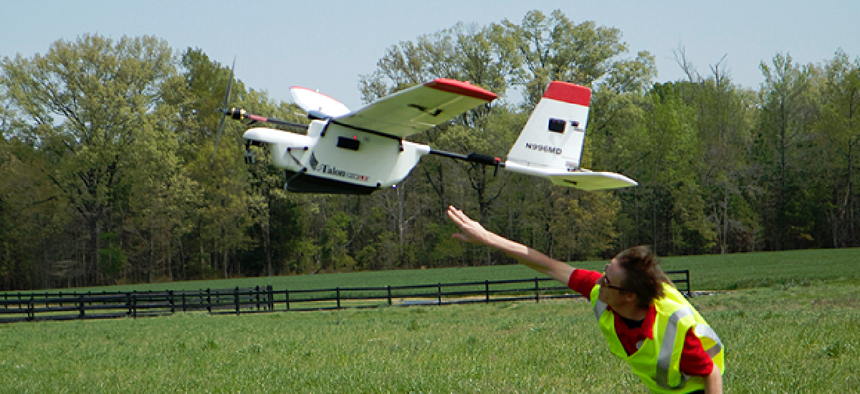Drone traffic control system test gets thumbs up

Despite a long road ahead, a first test of the UAS traffic management system demonstrated significant progress in integrating drones into the national airspace.
The Federal Aviation Administration, NASA and drone enthusiasts across the country are celebrating the success of first real test of a low-altitude traffic monitoring system for unmanned aircraft. NASA’s UAS traffic management (UTM) project demonstrated its first-stage capability, involving flights in rural environments associated with agriculture, firefighting and infrastructure monitoring. The successful April 19 demo involved the simultaneous flight of 22 drones from several sites.
“NASA extensively tested Technical Capability Level One and worked very closely with the FAA test sites, and the UTM research platform performed well,” Parimal Kopardekar, manager of NASA’s Safe Autonomous Systems Operations project and UTM lead, said. "This test would not have been possible without the six FAA test sites -- it was a collaborative effort to ensure a successful test."
“The software performed wonderfully, providing much-needed data and pointing toward open questions for the research community to address as we work to safely integrate unmanned aircraft into the National Airspace System,” added Richard C. Kelley, chief engineer for the Nevada Advanced Autonomous Systems Innovation Center.
“The tests went really, really well. I think a lot of good data was gathered -- a lot of good lessons learned,” Kevin Gallagher, CEO of Simulyze, an operational intelligence and technology application company, told GCN. Simulyze supported two of the FAA test sites that participated in the UTM demonstration last week.
“The other test sites used…a standalone client for each ground station to interface into the UTM system. We actually built an enterprise-level solution so that all the aircraft from a test site could come into one system, be managed and be worked as an integrated set of flights and then be able to interact directly with the NASA UTM system as a single entity -- as opposed to individual ground stations kind of talking directly to the UTM system,” Gallagher said.
The objective of last week’s tests was to demonstrate how the UTM would perform, what the workflow looked like and how to coordinate operational support, Gallagher said. Eventually, operators will put in their intentions and UAS flight plans so regulators can provide information -- such as what’s nearby and if they are deviating from their flight plan -- back to operators so they can take appropriate actions.
NASA’s UTM system is designed purely for research, to give the FAA information it needs so it can proceed with a regulatory framework, Gallagher said. NASA will turn over its research to the FAA in 2019, meaning a final product or framework for traffic monitoring is still some time off.
The UTM demonstrations will get increasingly harder with each technical capability, with the recent rural operational test being the least complex. “Each phase is going to be a little bit harder,” Gallagher said.
"The next test -- the Technical Capability Level Two -- is going to look at things like beyond-line-of-sight operations.”
NASA is gearing up for that next capability test -- slated for October -- by enhancing its UTM research platform to accommodate these operations, Gallagher said. Additional technical areas to be tested include “cooperative and uncooperative UAS tracking” over moderately populated areas (planned for January 2018) and the final level, set for 2019, involving UAS operation in higher-density urban areas.
NEXT STORY: Getting to gigabit Internet without fiber





